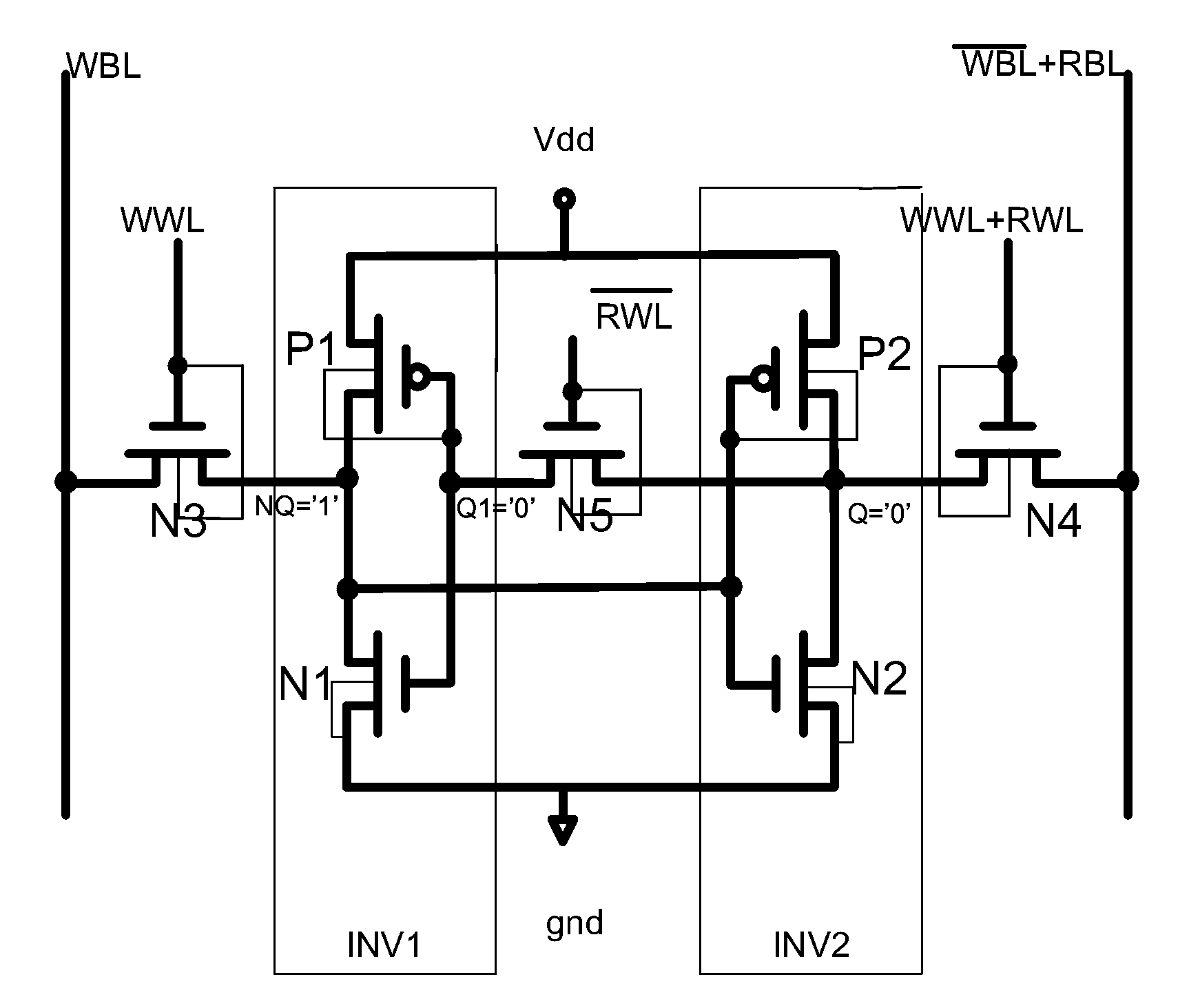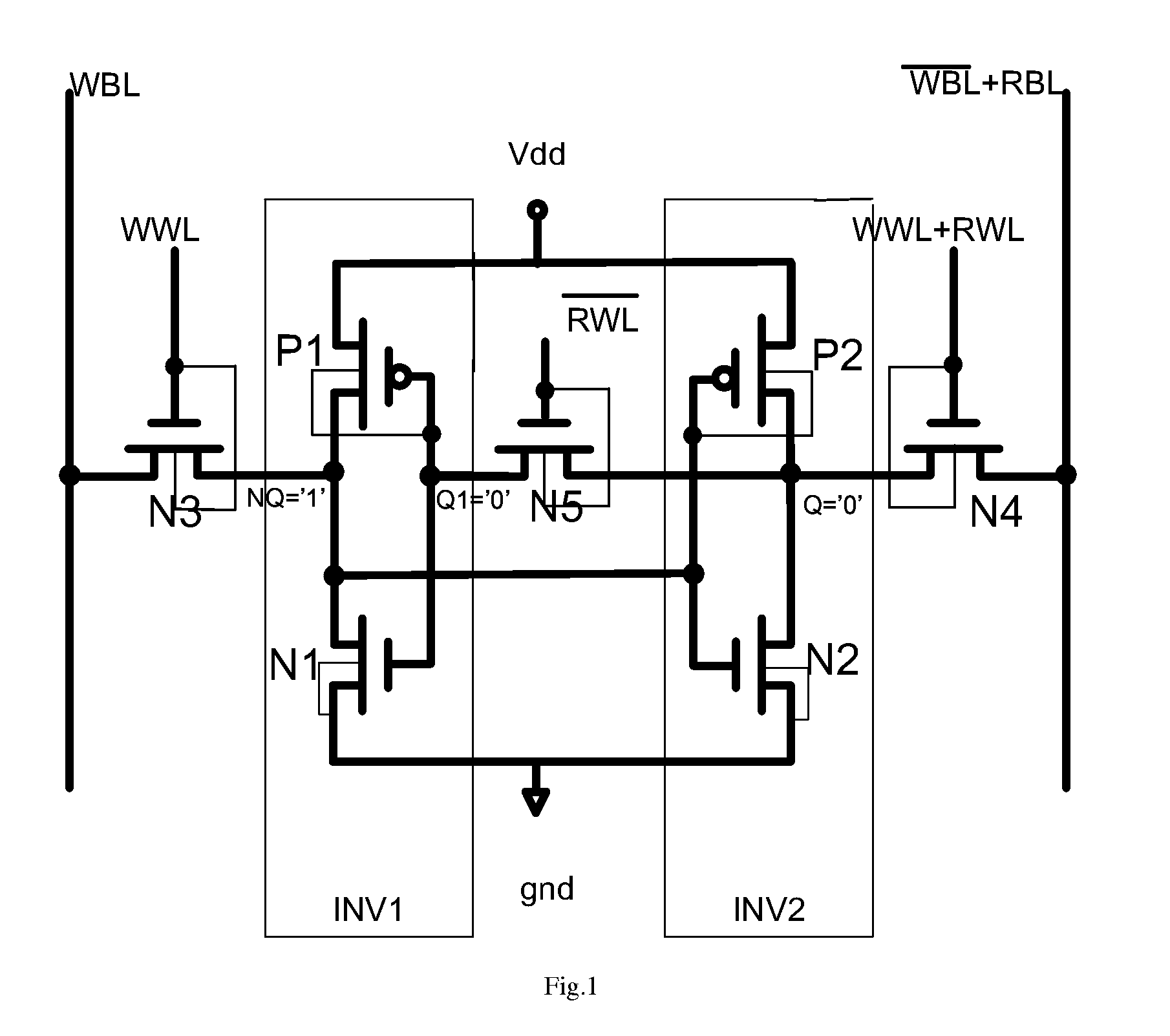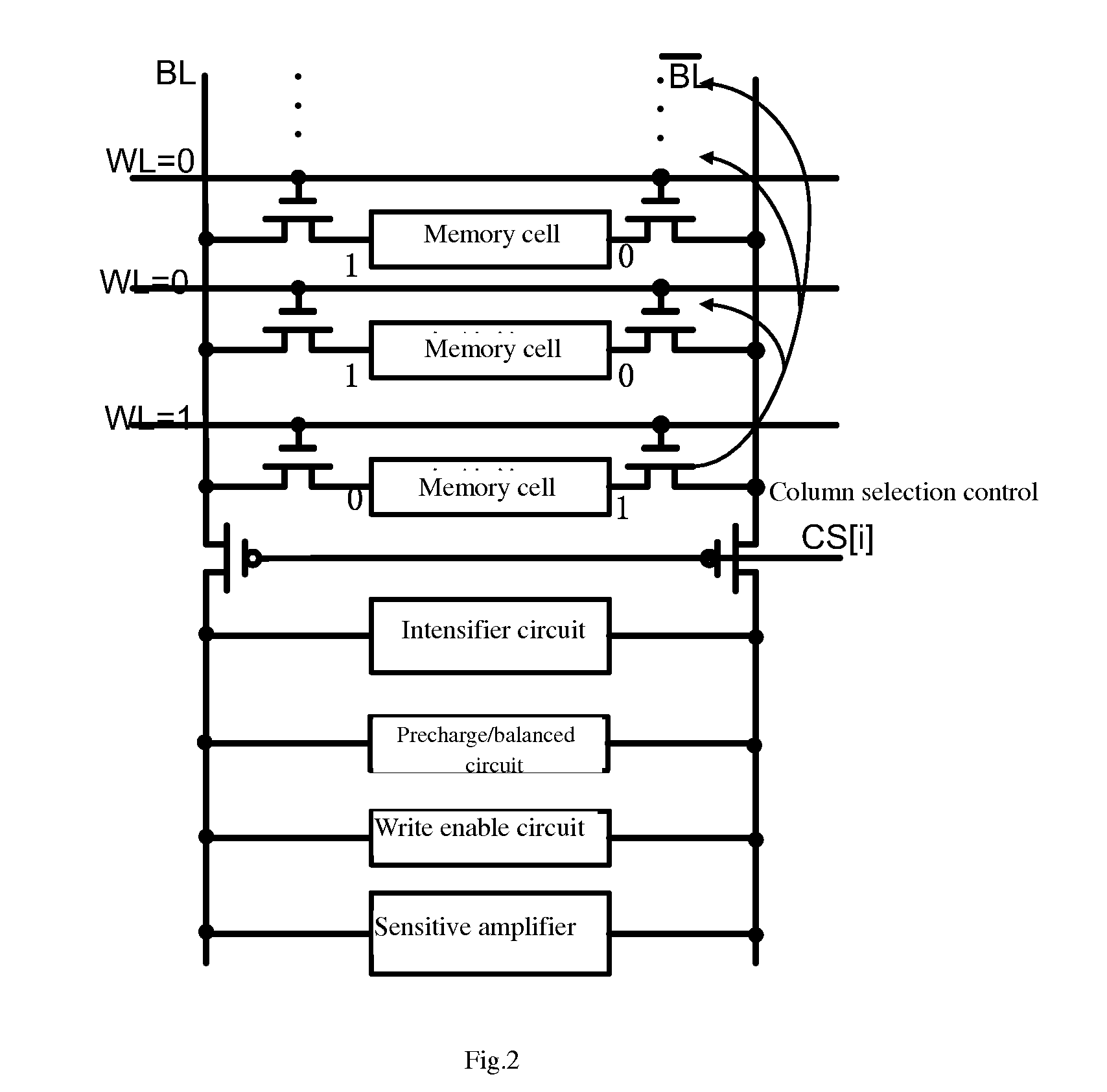Sub-threshold memory cell circuit with high density and high robustness
a memory cell, high density technology, applied in the field of memory cells, can solve the problems of weakened writing performance, severe deformation of static noise margin (snm), and deformation of tolerance to process deviation, and achieve optimal write noise margin, high robustness, and overall system performance. high
- Summary
- Abstract
- Description
- Claims
- Application Information
AI Technical Summary
Benefits of technology
Problems solved by technology
Method used
Image
Examples
Embodiment Construction
[0017]As shown in FIG. 1, the high-density and high-robustness sub-threshold memory cell circuit provided in the present invention comprises 7 transistors, two P-type transistors (P1,P2) and five N-type transistors (N1˜N5). Wherein, the base electrodes of P1, P2 and N3˜N5 transistor are connected with the grid electrodes of their corresponding transistor respectively. In transistors N1 and N2, the base electrode is connected with the conventional gnd. N1, P1 and N2, P2 form two phase inverters (INV1, INV2) respectively, and the two phase inverters are connected with each other via a cut-off transistor N5 in a cross coupling manner: the output end of INV1 composed of N1 and P1 is directly connected to the input end of INV2 composed of N2 and P2, and the output end of INV2 is connected to the input end of INV1 via the cut-off transistor N5. The grid electrode of N5 is connected with the NEG signal RWL of the read word line (RWL) of external control signal. N3 and N4 are matching trans...
PUM
 Login to View More
Login to View More Abstract
Description
Claims
Application Information
 Login to View More
Login to View More - R&D
- Intellectual Property
- Life Sciences
- Materials
- Tech Scout
- Unparalleled Data Quality
- Higher Quality Content
- 60% Fewer Hallucinations
Browse by: Latest US Patents, China's latest patents, Technical Efficacy Thesaurus, Application Domain, Technology Topic, Popular Technical Reports.
© 2025 PatSnap. All rights reserved.Legal|Privacy policy|Modern Slavery Act Transparency Statement|Sitemap|About US| Contact US: help@patsnap.com



